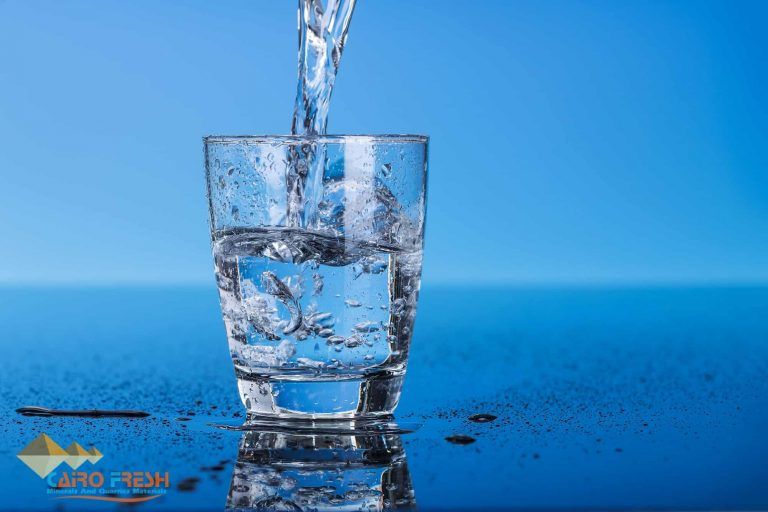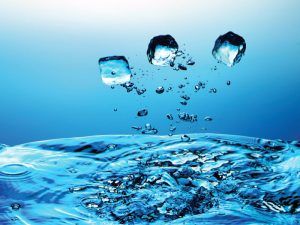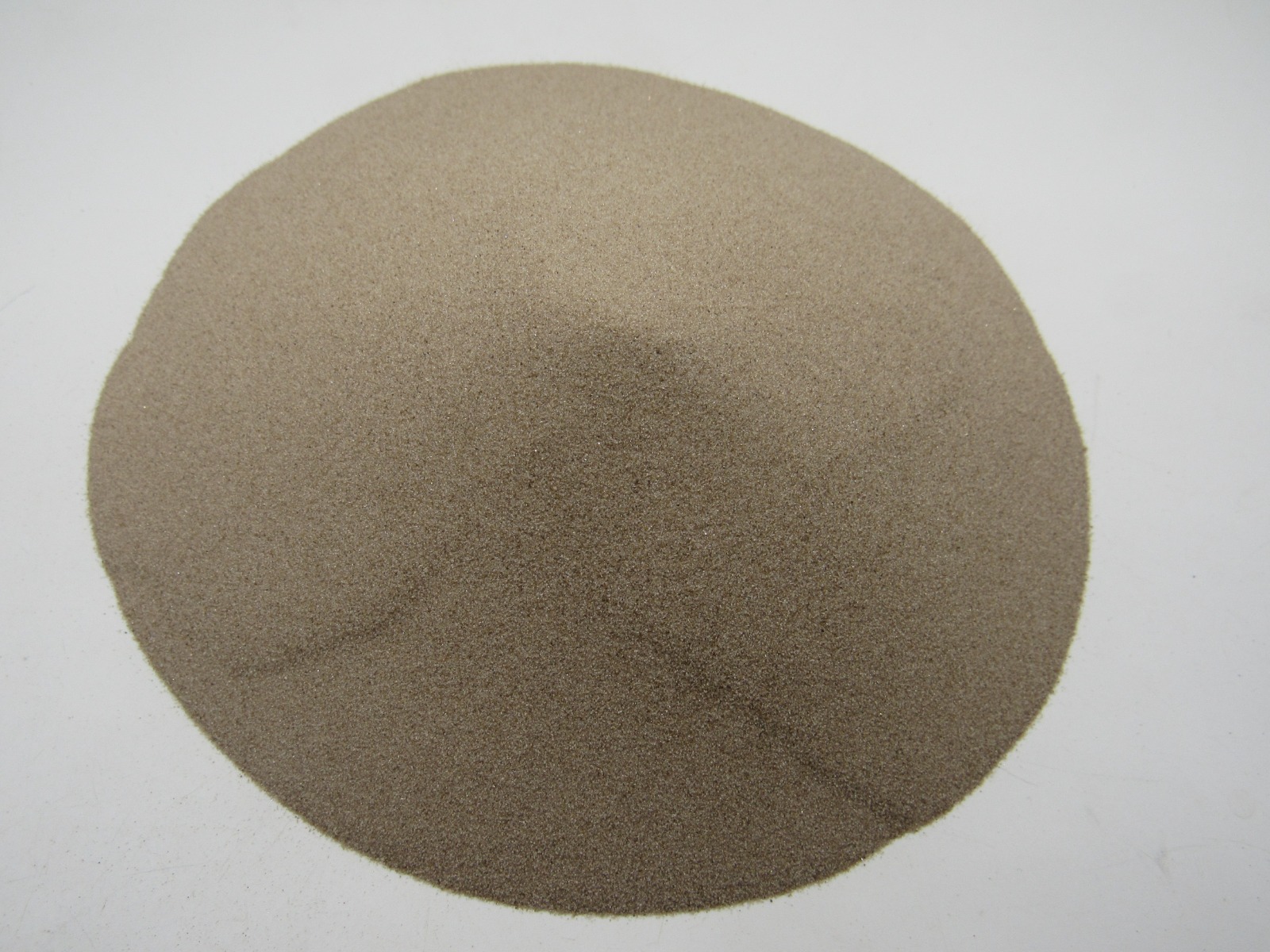What You Should Know About Filter Sand and Gravel
During the Pharaonic Era, researchers found traces of a sand filter in Alexandria dating back to 50AD. Silica sand for water filtration was used to obtain safe drinking water, and the use of sand filters to treat surface water came to light. This dates back to 4000 BC, and the idea of filtering water to obtain clean drinking water was born.
☻ Sand and gravel were used for filtration in England and Scotland, and later, in the United States of America, about 50 years later, slow sand filters were also used extensively.
☻Patrick Clark improved the filtering rate and reduced the area of land needed for constructing filters in the United States of America with his development of the slow sand filter in 1880. At the same time, sand filters with high rates were known as “Rapid Sand Filters” and, combined with the sedimentation process, were useful when chemical clarification treatment was not an option.
☻Afterwards, numerous filters were invented based on their filtering rates, operating procedures, water flow direction, and sedimentation process control methods.
☻Research started on filtering medium selection for filters, leading to trials with several natural materials as filtering media, including..,
- Silica Sand
- Anthracite Coal
- Granet
- Ilmenite
Why silica sand is used as filter media for water filtration, and how it works?
☻Through numerous experiments, it was found that Egypt commonly used silica sand for water filtration. It was readily available in large quantities and was cheaper than other options since it came from sand quarries.
☻Despite this, experts soon noticed that samples of sand or gravel from any quarry area contained grains of varying diameters.
Meanwhile, to determine the percentage of sand samples’ components based on diameters, we use a set of sieves placed over each other. We use this to pass a specific weight of sand and know the weights of sand with different diameters in each sieve to indicate the percentage of weights of sand grains with different diameters. This process is known as (testing sand grains by sieves). We will address this topic in detail in the following article.
People have been using silica sand to purify water for a long time. Water filtration worldwide majorly uses four grades of silica sand. John Gibb designed and installed experimental filters, and he recorded the earliest use of silica sand for water filtration in 1804. Refinement of this unique filtration method happened in the years after and culminated in James Simpson’s installation as the first global public water supply for Chelsea Waterworks company in 1829. Physician John Snow made the connection between the quality of the water and Cholera incidences in 1845/1855, and water treatment practice became mainstream. You can find various products that suit your needs on our website.
Nature of Silica Sand for Water Filtration
Most of the developed world takes the provision of good quality potable water for granted. So, how does it work? Natural silica sand is an ideal filtration media to capture suspended solids in water due to its sub-angular to rounded shape. Sand is durable and hard-wearing, allowing it to be precisely graded to facilitate efficient filtering, given its high silica content.
Grades of silica sand used for water filtration include 16/30, 8/16, 6/14, and 14/25, 20/40,18/8, 2/4,3/6, 6/13, 13/19, and14/25. Silica grade can be easily determined by using the size range, the Effective size (D10), or UC. Silica sand is usually laid on top of the supporting layer of gravel within the filter vessel. As incoming water enters the filter, it migrates through the silica sand, efficiently removing any solid or debris from the water.
Silica sand’s unique properties usually make it the preferred option for water filtration in a wide range of applications, including swimming as well as leisure, paper processing, power generation, chemical processing, and portable as well as wastewater treatment. Many types of silica sand are available in the market. Pressure filters, which operate with a feed pressure of two to five bars and are usually used in leisure applications, have feed water that enters and passes through the bed of silica sand. Most particulate solids are typically captured high up in the filter bed, and this kind of filter can capture even tiny particles. The buildup of the particulate solids causes an increase in pressure loss across the bed for a specific given flow rate. When this pressure loss or flow rate is not acceptable, the bed is back washed to remove accumulated particles.
Rapid gravity filters
The Rapid gravity filters are used for water purification, mainly used during drinking water treatment works. They do require smaller land areas concerning the slow sand filters and use silica sand and other granular media to remove the particles and impurities.

This is our product of the filter sand and Gravel that is exported to over 17 countries in various parts of the World. Our silica sand is extracted from the high-quality quarries with SI02 over 96.7% that was the river sand for many years. Raw material gets extracted from East Egypt, wady al Natron, Sadat City, and Giza.
Our Uniqueness – Silica Sand for Water Filtration
The Silica gravel we produce has porosity and permeability. This enables water to easily flow through it, and this is usually by gravity drainage. Moreover, Silica Gravel does filter large debris such as leaves, grass, etc. It is however, essential to note that it does not clean or even purify the water.
Water filtration sand is our product of filter sand, and Filter Gravel. It is exported to more than 17 countries all over the World. We extract from High-Quality Quarries with SIO2, more than 96.7% of which had been river sand for thousands of years. In other words, the raw materials are generally extracted from East Egypt, wady al Natron, Sadat City, and Giza.
We produce and process our products in our screening plant, which is the biggest in Egypt. Hence, we assure the stability of quality in the long term supply to companies in the field of water filtration and treatment companies worldwide. We export to many countries (Greece – Cyprus – Spain – Italy – Georgia – Croatia – Albania – Japan – Senegal – the Philippines – Malta – Turkey – Mauritius – China – India – Indonesia – Ireland – South Korea – Singapore – Mayotte Island, Syria – United Arab Emirates – Sultanate of Oman – Qatar – Kuwait – Libya- Iraq-Yemen-Algeria-Bahrain-Palestine-Kingdom of Saudi Arabia-Sudan)

Cairo Filter Sand can filter and clean portable water filters, pool filters, and sewage treatment plants. It is at least 96% pure, free of any organic materials, clay, radiation, or toxic materials.
It meets EN12904 and AWWA B100-96 and BS:910(1969)
Filter Silica Sand and Filter Silica Gravel used for Water Filtration
Chemical name(s): Silica, silicon dioxide
Synonym or common names: Silica sand and silica gravel.
Commercial forms: sand and silica gravel according to this standard are available in different particle size ranges.
Physical properties of silica sand and silica gravel
Appearance
- The product is a grey/white, yellow, or multicolored granular material.
- The structure is crystalline, with a smooth to a rough texture.
- The particle shape is spherical or angular depending on the origin and manufacturing procedure (quarrying, dredging, or crushing). The form influences filtration performance, see A.3.
- The product shall be generally homogeneous
- The product shall also be visibly free of extraneous matter.
Particle size distribution of Silica Sand and Silica Gravel
- Either shall describe the particle size distribution:
- effective size: (c/^q j, with a maximum deviation of ± 5 %;
- uniformity coefficient: (U), shall be less than 1,5; minimum size : (d* \, with a maximum deviation of ± 5 %;
- The full contents of oversize and undersize shall be a mass fraction of 5 % for applying the product in multi-media filters and a mass fraction of 10 % for use in single media filters. For use as a support layer, full contents of oversize and undersize of mass fraction 15 % are acceptable. See A.2.3 for examples of available particle sizes that are used.
- The particle size of silica sand and silica gravel can decrease during transportation and handling. Other values can be necessary for specific applications.
What is the Density of silica sand?
- Bulk density loose of Filter sand and Filter Gravel
- The Bulk density loss shall be from 1 400 kg/rn° to 1 700 kg/m.
Bulk Density packed with filter sand and filter Gravel
The Bulk Density packed shall range from 1 500 kg/m3 to 1 900 kg/m3.
Chemical properties of silica sand and Filter gravel
The minimum purity requirements for silica sand and silica gravel used for the treatment of water intended for human consumption. Limits are given for impurities commonly present in the products. Depending on the raw material and the manufacturing process, other contaminants may be present and, if so, this shall be notified to the user and when necessary to relevant authorities.
Users of these products should check the national regulations in order to clarify whether it is of appropriate
purity for treatment of water intended for human consumption, taking into account raw water quality, required dosage, contents of other impurities and additives u;..m in tin.- pn;d>i<,U; nnl stated in this articles.
Limits have been given for impurities and chemical parameters where these are likely to be present in significant quantities from the current production process and raw materials. If the production process or raw materials lead to significant amounts of impurities, by-products, or additives, the user will be notified.
Silica sand and silica gravel shall be 96% from our quarries.
Acid-soluble material gives information about the source of silica sand and Gravel.
After filling, washing, and commissioning a filter system producing drinking water, the silica sand or silica gravel should not increase the concentrations of chemical parameters (see [1]).
Water-extractable substances, determined per the method for granular materials given in EN 12904, can be used to estimate the leaching of the chemicals specified in EN 12902.
Test methods for Silica sand
Sampling
Prepare the laboratory sample(s) required by the relevant procedures described in EN 12904.
Analysis of silica sand and silica gravel for water treatment
Particle size distribution of filter media of silica sand and silica gravel
To determine the particle size distribution, conduct a test using EN 12904 at the point of manufacture.
Bulk density loose
For determining the bulk density loss, follow EN 12904 guidelines.
Bulk Density packed of silica sand gravel for swimming pool filter sand.
To determine the bulk density packed, follow EN 12904 guidelines.
Content of silica
For determining the silica content, conduct a test using EN 12904 (result should be 96%).
Acid-soluble material test
To measure acid-soluble material, follow EN 12902.
Labeling, Transportation and Storage
Means of delivery
Silica sand for water filtration can be delivered in bags or semi-bulk containers, or or in bulk. To ensure that the purity of the product is not affected, the means of delivery shall not have been used previously for any different product, or it shall have been specially cleaned and prepared before use.
Risk and safety of silica sand labeling according to the EU
Silica sand for water filtration is not subject to labeling regulations at this document’s publication date.
NOTE 1 Annex I of the Directive 67/548/EEC on Classification, packaging, and labeling of dangerous substances and its amendments and adaptations in the European Union contains a list of substances classified by the EU. Substances not in this Annex I should be classified based on their intrinsic properties according to the criteria in the Directive by the person responsible for the marketing of the substance.
Transportation regulations and labeling of silica sand for Filtration and gravel filter media
Silica sand and silica gravel are not classified as dangerous goods.
Marking Of Silica sand and Gravel For Filtration
The marking shall include the following:
- The name “silica sand” or “silica gravel,” trade name, grade, and type; net mass;
- Name and address of our Company statement “This product conform to EN 12904”.
- Storage Of Silica sand for Filtration
- Long-term chemical stability
- Informative
- General information on silica sand and silica gravel
- Origin
- Raw material
Note that Silica sand and Gravel can be stored unlimitedly and shall be adequately protected from outside contamination. Natural silica sand, swimming pool filter sand, silica gravel are mainly from Egypt.
The manufacturing process of filter media, filter sand, filter Gravel
Silica sand for water filtration is produced by quarrying, dredging or crushing, cleaning, drying, and sieving.
- Typical properties
- Chemical composition
The composition depends on the origin. Typical values (mass fraction) will be according to EN12904.
Chemical composition
Mineralogical and petrol logical analyses give additional information.
Mechanical strength of silica sand and silica gravel
The mechanical strength of silica sand and silica gravel is high. Abrasion products consist of dust and small particles of material. They are formed during transportation, filling and washing. Also, abrasion products are not entirely removed by washing.
The existing methods for determining abrasion do not give accurate results regarding the behavior of filter media during operation. They can be used only for the comparison of different filter media.
- Density
- Absolute Density
The absolute Density is generally in the range of 2,5 g/cm° to 2,8 g/crn°.
Particle density dry
- The particle density dry is generally in the range of 2,5 g/cm3 to 2,8 g/cm3
Particle density wet
- The particle density wet is generally in the range of 2,5 g/cm3 to 2,8 g/cm-1.
Function
- Silica sand and silica gravel are used as filtering or supporting materials.
Specific amount or quantity of silica sand
- The amount of silica sand and silica gravel used depends on the application. Filtration rate and filter media depth vary with the suspended matter content of the water to be filtered.
Means of application
- Silica sand and gravel are applicable to open or closed, single, or mull media filters
Secondary effects
- The products have no secondary effects.
Hydraulic characteristics of Silica sand used in Water Filtration.
Interstitial volume
The interstitial volume is approximately 0,4 (V/V). Silica sand and gravel are applicable to open or closed, single, or mull media filters. Silica sand is also used in “slow sand filtration” systems. For proper calculations, measure the interstitial volume.
Head loss in Filtration
- Head loss depends on the size, shape, and roughness of particles, filtration rate, filter bed depth, and water temperature.
- The expansion during washing depends on a number of factors. This include flow rate, adequate size, Density, shape, the roughness of particles, and water temperature.
Rules for safe handling and use in water treatment
- Swimming pool filter sand is not a hazardous product
- It is recommended to avoid dust formation and wear a dust mask when handling dry products, especially during air conveying. If dust forms, sweep and discard in a refuse container or repackage.
Emergency procedures of silica sand for Filtration and Gravel for Filtration
- First aid in using swimming pool filter sand
- Wash with water if there is contact with skin.
- Flush with plenty of water if there is contact with the eye.
- Move to fresh air if inhaled
Spillage of swimming pool filter sand and silica gravel for Filtration as Filter Media
- If this happens, sweeping up and discarding in a refuse container or repackage is recommended.
Fire Expected of swimming pool filter sand and Filter Gravel
- No special requirements are necessary for this.
Cairo Filter Sand
- Full range of Grades and Practical Sizes from 0.200 mm-350 mm
- We have our lab for following up on quality insurance with each Batch
- No radioactive substance
- SIO2 min 96%
- The mechanical strength of silica sand is High
- The Bulk Density of un-compacted Silica Sand may vary from 1400 kg/m3 to 1700 kg/m3.
- The mechanical strength of silica sand is High
- Silica Sand is rounded in shape
- free of heavy metals
- NO TOXIC
- without polycyclic Aromatic Carbons (Suitable for Portable water treatment plants and wastewater treatment).
- 100% Natural sand.
- High acid solubility resistance in HCL
- Hardness 7 Moh
- NO ODOR, No Dirt, No Stains
- Screened and sieved into different grain sizes according to Effective measures For each filter system.
We have our screening plants which are three. This enables us to keep stability in quality and meet large orders.
Our Competition -Silica sand for water Filtration
We always have Enough Stock Of Each Grade and a Wide Variety of Packing for swimming pool filter sand
It has Its Own Skilled and Qualified human resources that can do the product in
- Small bags of 25 kg or 50 kg
- Big Bags of 1500 kg
- We customize the packing according to client requirement
- Private labeling is available
- Bags either PP or PE or PP laminated
- bags can be mounted on EURO pallets. Our shipping experience is extensive.
- We can ship on trucks of domestic transportation.
- Load in 20 feet for overseas shipping.
Characteristics
| Color | Brown/Yellowish(off White ) |
| SiO2 | 96.90% |
| Fe2O3 | 0.29% |
| AL2O3 | 1.00% |
| K2O | 0.070% |
| Turbidity | <100 |
| Hardness | 6 – 7 Mohr |
| Attrition Loss | below 1% in 100 hours back washing |
| Acid Solubility | below 2% [24hours in 20% Hal] |
Sample of Grades of Filter sand and Filter Gravel produced in our screening plant
Silica sand Sizes according to EN12904&ANSI/AWWA B100-01//BS:910(1969)
| Silica sand for filtration size | 0.4mm | 0.8mm |
| Silica sand for filtration size | 0.40mm | 1.30mm |
| Silica sand for filtration size | 0.20mm | 0.70mm |
| Silica sand for filtration size | 0.40mm | 1.60mm |
| Silica sand for filtration size | 0.40mm | 2mm |
| Silica sand for filtration size | 0.50mm | 1mm |
| Silica sand for filtration size | 0.50mm | 2mm |
| Silica sand for filtration size | 0.6mm | 1.18mm |
| Silica sand for filtration size | 0.63mm | 1mm |
| Silica sand for filtration size | 0.60mm | 1.50mm |
| Silica sand for filtration size | 0.60mm | 2mm |
| Silica sand for filtration size | 0.60mm | 2.60mm |
| Silica sand for filtration size | 0.85mm | 1.7mm |
| Silica sand for filtration size | 1mm | 1.6mm |
| Silica sand for filtration size | 1mm | 2mm |
| Silica sand for filtration size | 1mm | 2.50mm |
| Silica sand for filtration size | 1mm | 3mm |
| Silica sand for filtration size | 1.18mm | 3.2mm |
| Silica sand for filtration size | 1.60mm | 2.50mm |
| Silica sand for filtration size | 2mm | 3mm |
| Silica gravel for filtration size | 2mm | 4mm |
| Gravel for filtration size | 2mm | 6mm |
| Filter gravel media size | 2.36mm | 4.75mm |
Silica Gravel Sizes According to EN12904 &ANSI/AWWA B100-01/BS:910(1969)
| Filter Gravel size | 3.15mm | 5.6mm |
| Filter Gravel size | 3mm | 6mm |
| Filter Gravel size | 5.6mm | 8mm |
| Filter Gravel size | 6mm | 12mm |
| Filter Gravel size | 6mm | 13mm |
| Filter Gravel size | 6mm | 20mm |
| Filter Gravel size | 8mm | 12.50mm |
| Filter Gravel size | 12.50mm | 16mm |
| Filter Gravel size | 13mm | 20mm |
| Filter Gravel size | 13.5mm | 26mm |
| Filter Gravel size | 20mm | 50mm |
| Filter Gravel size | 25mm | 40mm |
Silica sand used in sea water Desalinations as Filter Media
Silica sand, also known as quartz sand, is one of the most common varieties of sand found across the world. It is used for a wide range of applications, from glass making to petroleum extraction. But one of the most important and environmentally impactful uses of silica sand is in sea water desalination as a filter media. This process is crucial for producing fresh water from sea water, especially in arid regions.
What is Sea Water Desalination?
Sea water desalination refers to the removal of salts and other minerals from saline water to produce water suitable for human consumption and irrigation. The importance of this process has grown significantly with the increased scarcity of freshwater resources globally.
The Role of Silica Sand in Desalination
Silica sand is critical in the pretreatment phase of desalination. Its primary role is to remove particulates and impurities from sea water before it undergoes the main desalination process, which can be either through reverse osmosis or thermal distillation.
Advantages of Silica Sand in Desalination
1. High Purity: Silica sand is composed mainly of silicon dioxide, which does not react with sea water. This purity ensures that the sand does not introduce new contaminants.
2. Chemical Stability: Its chemical inertness makes it a stable filter media that does not affect the composition of the water being treated.
3. Physical Robustness: Silica sand grains are hard and durable, capable of enduring the physical demands of constant water flow and filtration.
Silica Sand vs. Other Filter Medias
While there are other materials available for filtration, silica sand is preferred for several reasons:
– Cost-effectiveness
– Availability
– Grain size uniformity
The Desalination Process with Silica Sand
The desalination process typically involves several stages, each of which may use silica sand in different capacities. The details of these stages, including pre-filtration, sedimentation, and the main desalination process, will be elaborated here.
Sustainability and Environmental Impact
The environmental sustainability of using silica sand in desalination is another significant factor. Silica sand is a naturally occurring material, which makes it a more environmentally friendly choice compared to synthetic filter media.
Future of Silica Sand in Desalination
With the advancement in desalination technology and the increasing need for freshwater, the demand for high-quality silica sand is expected to rise. The potential for innovation in the processing and efficiency of silica sand as a filter media is vast.
Conclusion
A brief conclusion summarizing the discussed points and the outlook for the use of silica sand in desalination processes will be presented here.
This outline gives a comprehensive overview of the role of silica sand in sea water desalination. You can expand on each of these sections, providing more detailed information, statistics, and case studies to flesh out the full article and enhance its SEO potential. Remember to include keywords throughout the article in a natural and contextually appropriate manner, such as “silica sand,” “sea water desalination,” “filter media,” and “sustainable water treatment,” to improve its search engine rankings.




